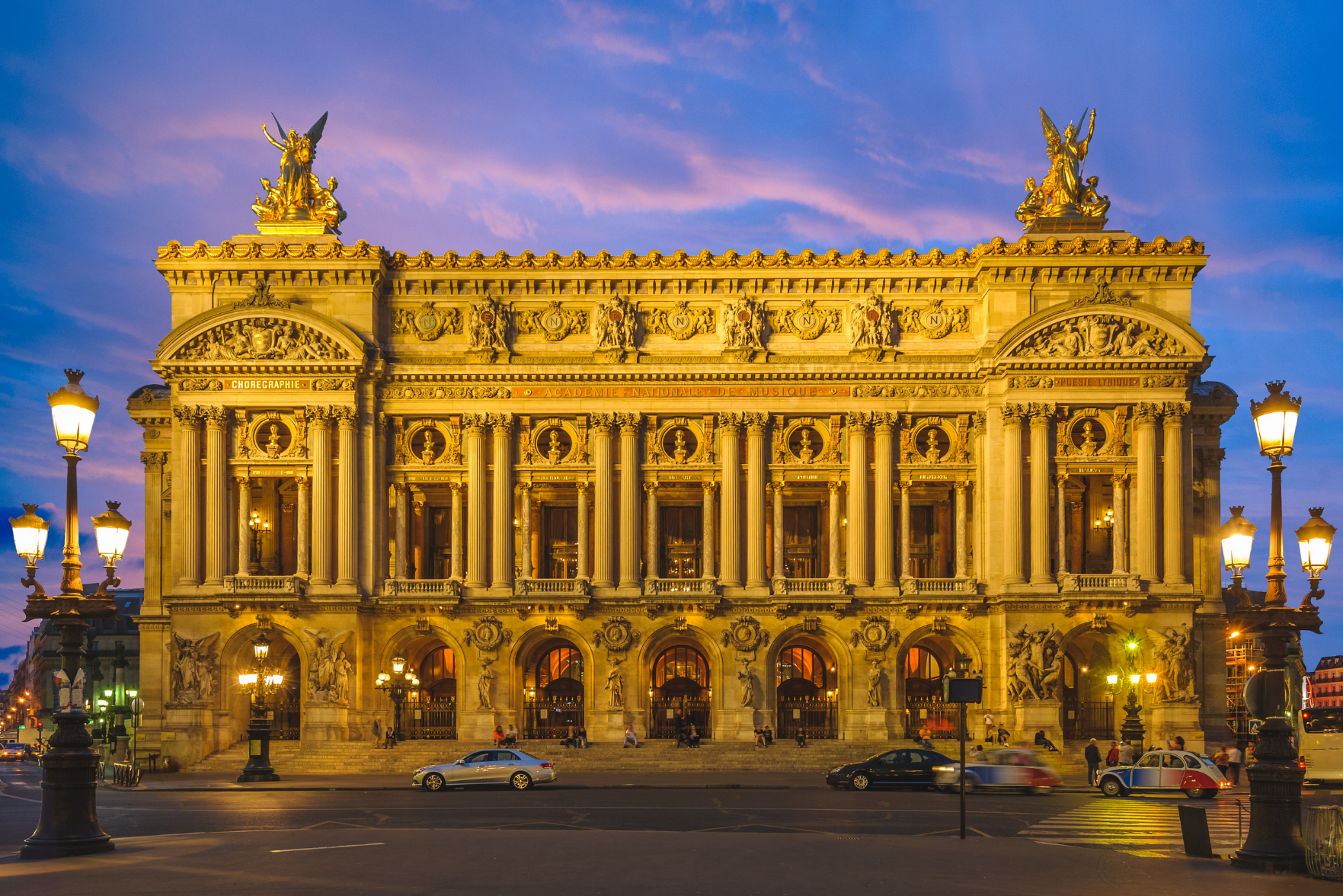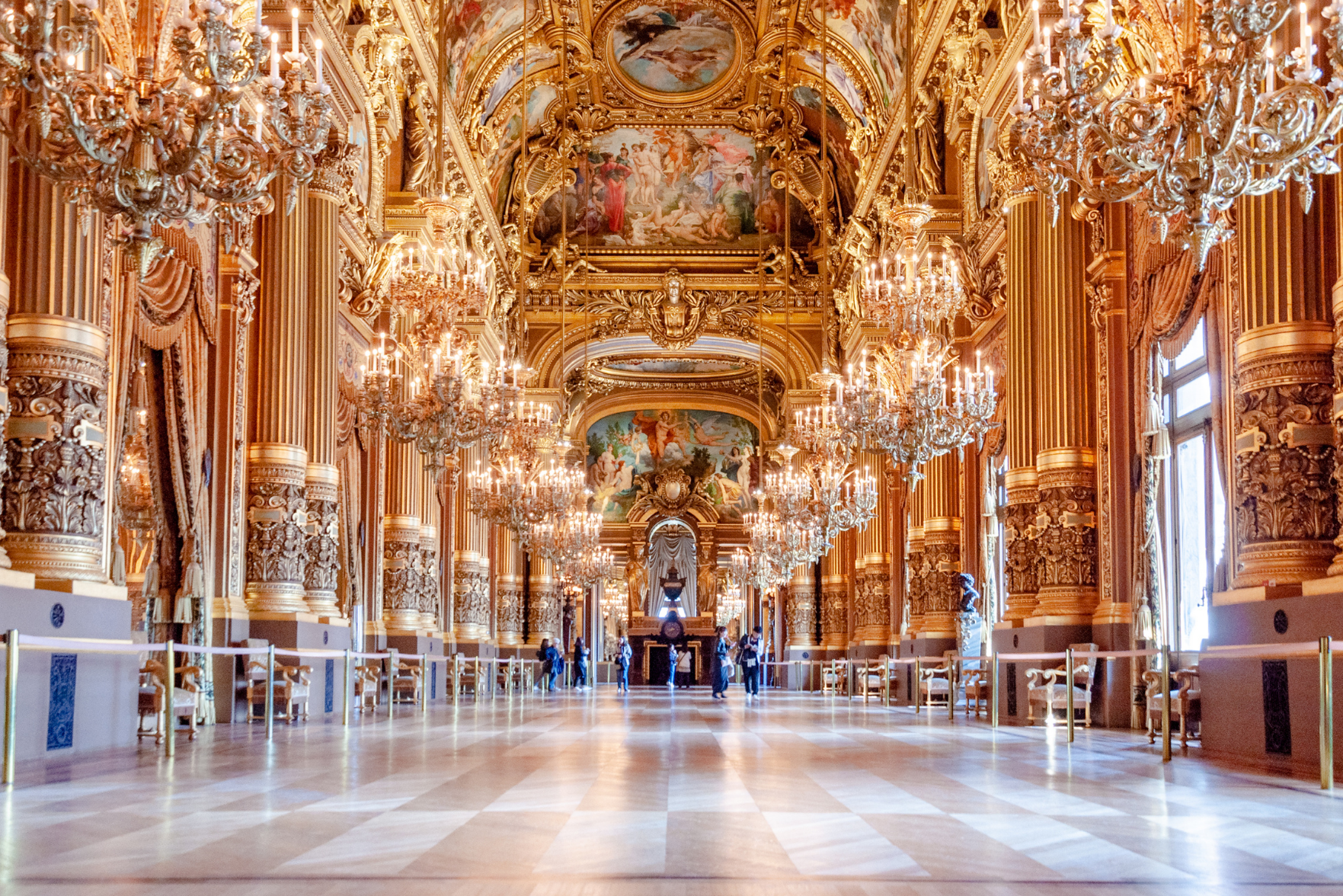Charles Garnier, architect of the Paris Opera House
Posted by Josh on 5th Nov 2025 in the blog in the french culture category
The Palais Garnier: 150 years of a legendary theatre
On November 6th, 2025, it will be Charles Garnier’s 200th birthday. But this year it is also the 150th anniversary of the Paris Opera House.
The Opera House is celebrating this double anniversary with a special exhibition, which runs from 15 October, 2025 until 15 February, 2026. The exhibition explores the history of the theatre through paintings, manuscripts, costumes, drawings, posters, photos, book and other objects. You can book your tickets on the website. It's recommended that you book in advance, as the Opera House is a popular attraction for tourists.
Who was Charles Garnier?
Charles Garnier (1825-1898) was one of France’s most garlanded architects. He is famous for having designed a number of buildings in the Second Empire Style, which used modern materials such as cast iron and glass, and inspiration from historical styles such as Baroque and Palladian, to evoke grandeur and opulence. The most famous of Garnier's buildings is the Palais Garnier, or the Paris Opera House as it is also known.
Garnier studied at the École des Beaux-Arts in Paris, where he was trained in the neoclassical style of architecture, and graduated in 1842. In 1848 he was awarded the Grand Prix de Rome for his design “Un conservatoire des arts et métiers” (“A Conservatory of Arts and Crafts”), which entitled him to study at the Villa Medici in Rome. Here he was able to study Rome's architectural diversity first hand, and saw how different historical architectural styles could co-exist in a single space - an observation which informed his eclectic approach to designing and building. In the Paris Opera House, for example, you can see classical inspiration in the building's façade, with its columns and statues of figures from Ancient Greek mythology, as well as the influence of Rococo design on the grand staircase and eastern styles in the use of porphyry, marble and gilded bronze to achieve a colourful effect.
When Napoleon III came to power, one of his policy's was a total redesign of the city of Paris. Part of the plans involved a new building to host the Paris Opera. Garnier won the competition to build the Paris Opera House in 1860, beating 170 other submissions - including one by his former teacher, Léon Vaudoyer - even though Garnier was relatively unknown at the time. Construction started in 1861, but wasn't completed for another fourteen years. The first performance to take place there was Fromental Halévy’s La Juive, on 8 January 1875.
The building remains one of the most renowned landmarks in all of France, and has featured in many films and novels. Perhaps most famously it was the setting for Gaston Leroux's The Phantom of the Opera.
After completing the Paris Opera House, and the reputation it gave him, Garnier embarked on a number of other projects. Among his other buildings are the Nice Observatory (1878), the Hôtel du Cercle de la Librairie in Paris and the Opéra de Monte-Carlo (both 1879). He also took part in the Paris Exhibition 1889 (where the Eiffel Tower was unveiled), where he designed the “Histoire de l’Habitation Humaine” (History of Human Dwellings). The exhibition charted the course of architectural history across civilisations by representing different phases (such as Egyptian, Roman, medieval, etc.) through a series of pavilions, each showcasing the kinds of building that were typical of that time and place.
Garnier retired in 1896; he died in 1898, at the age of 72. After his death, a monument to the great architect was added to the Paris Opera House, which features his bust and two allegorical statues personifying Glory and Design.
Check out some of our other blog posts!
How to make nouns plural in French
Posted on by Josh in the learning french categoryThis is how you change a noun from singular to plural
Read moreHow to Frenchify your Valentine's Day
Posted on by Nancy in the valentine's day categoryValentine’s Day is just around the corner. This year’s celebrations will look very different for many of us around the world. In the United Kingdom, Valentine’s Day 2021 will be spent at home. All restaurants are closed; unless you’re getting takeaway, you are fresh out of luck. This means, you must come up with something to do in-house for your chéri (e).
Read moreHave fun learning French Today
People from all over the world enjoy learning French with Alexa Polidoro’s popular French audio and video lessons.




